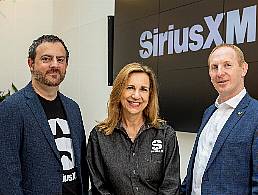With this being the time of year associated with graduates looking for jobs, let’s look at some common cover letter mistakes to avoid.
Applying for a job? No matter how good your CV is, if your cover letter fails to make an impression on your prospective employer, you more than likely won’t get the gig. The jobs market is competitive, especially around this time of year when hundreds of freshly minted graduates are looking to get onto the career ladder.
Careers advice website ResumeLab asked 205 US HR professionals for their opinions – good, bad and indifferent – on how cover letters influence the hiring process.
The key takeaway is that cover letters do influence the hiring process. The vast majority (87pc) of those surveyed said they preferred it when a candidate sent in a cover letter with their job application. Furthermore, 70pc said they would reject a candidate outright for not including a cover letter. Most (81pc) said they read cover letters compared to just 19pc who said they did not or only read them sometimes.
Infographic: ResumeLab.
HR professionals don’t read cover letters for fun, however. They are looking for certain information in your letter, including why you want the job or to work for their company. Writing a cover letter is not your opportunity to showcase your epistolary skills or your design skills.
When it comes to cover letter no-nos, the most pertinent issues raised by the HR people surveyed were design-related. You should, under no circumstances, ever use Comic Sans to type your cover letter. Professional fonts like Times New Roman, Calibri and Arial are best. If you’ve got a good personality, tell them about it instead of sending a gaudy-looking document for them to read. A good rule of thumb is: would I see this font on a clown’s website? If the answer is yes, change the font.
It’s also best not to waffle. Say what you need to say about yourself and your skills and what you would bring to the position. That’s all. Most of those surveyed agreed a cover letter needs to be only a page long. Only 18pc said they needed to more than one page.
Infographic: ResumeLab.
Now that we’ve covered optics, let’s look at content. The HR professionals surveyed by ResumeLab helpfully indicated some of the major red flags they look out for when reading candidates’ cover letters.
Informal greetings, such as ‘Hi!’ and typos and spelling mistakes are frowned upon. More than three quarters said they would instantly reject somebody if their cover letter had typos, while 26pc said informal greetings were a “serious problem”.
Unsurprisingly, lying is not appreciated either. Just 9pc said cover letter fibs were not a problem compared to 38pc who thought lying was a serious problem. The older a respondent was, the more likely they were to say lying was a no-no. So, just tell your employer the truth; it’s easier.
Infographic: ResumeLab.
A last important tip for writing an impactful cover letter is don’t just copy everything you already said in your CV. The letter is the space for you to really sell yourself as the ideal candidate. You should leave an employer thinking, ‘Wow, this person is a contender,’ after they’ve read your cover letter.
Don’t miss out on the knowledge you need to succeed. Sign up for the Daily Brief, Silicon Republic’s digest of need-to-know sci-tech news.




